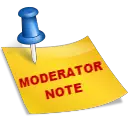Welcome guest, is this your first visit? Click the "Create Account" button now to join.
Results 51 to 56 of 56
-
29th March 2016, 08:16 AM #51

The following instructions is simplified to work with only one PNG bitmap used for logo; the replaced bitmap must be same resolution as original
Spoiler: .Last edited by osiris4isis; 29th March 2016 at 09:38 AM.
-
29th March 2016, 09:19 AM #52Member


- Join Date
- Mar 2016
- Location
- Taiwan
- Posts
- 13
- Rep Power
- 0

-
29th March 2016, 09:27 AM #53

The bitmap size is stored in little-endian format, so you have to reversed the 4 octets to get value. Lets say if I want to store number=123456 which is 1E240, but will be stored as 40E201. You don't find PNG by using its filesize (which you would not know initially), you find it by searching for \89PNG (read my instruction again!)
Last edited by osiris4isis; 29th March 2016 at 09:30 AM.
-
29th March 2016, 10:48 AM #54

@aspireryan
Maybe it will help you to understand if said in very basic terms with an image to illustrate the process.
Osiris means that you need to reduce the new image to be at least equal or less than the size of the existing one. Your 'Ford' bitmap is 122,052 bytes and the [shrunk] Lexus one is 120,350 bytes. When you find 'PNG' in plain text in a hex editor, it is shown as '50 4E 47' in hexadecimal, on the plain text side there will be a meaningless symbol just before PNG which is '89' in hex:

So starting on the left of '89', count back 15 bytes [squares] then you will be at 'C4' and 'the 4 octets is size of image' means you take 'C4DC0100' and then reverse to get '0001DCC4' and that when converted to decimal will disclose the size of the previously loaded Ford image, which i find to be 122,052 bytes and that tallies with the size disclosed in the image's Windows' properties [133,337 bytes or '0208D9' coincidentally is the size of the 'lexus2.png' which you supplied so maybe that's a typo rather than one of my usual cock-ups ]. However, i do convert '0001D61E' as 120,350 bytes which is what Osiris has for the new reduced Lexus image to make it less than the original Ford one.
]. However, i do convert '0001D61E' as 120,350 bytes which is what Osiris has for the new reduced Lexus image to make it less than the original Ford one.
Of course if you're not so comfortable using a hex editor, you can easily and visually check the image size by opening the logo bin file in GIR_Editor and a tmp.png file will be saved automatically in the bin file's same directory for you to then easily check its size by right click > Properties.
An easy online hex > dec converter, there's lots of them around:
Code:Please Login or Register to see the links
'Thanking Posts' are banned. To thank someone, and/or to see hidden links and content, use the [Only registered and activated users can see links. ] button below left of the helpful post then refresh your browser [F5 key]. 'Thanking Posts' are banned.
Please don't spam. Posts serving no purpose other than to thank or to ask about hidden links are trashed or deleted, it's GPSPower's policy. Please don't spam.
[Only registered and activated users can see links. ] should make their first post as a new Intro Thread in [Only registered and activated users can see links. ].
-
29th March 2016, 11:16 AM #55

Last edited by Neil; 29th March 2016 at 10:24 PM. Reason: add mod note.
-
30th March 2016, 05:43 AM #56Member


- Join Date
- Mar 2016
- Location
- Taiwan
- Posts
- 13
- Rep Power
- 0

Dear neil & Osiris
Thanks for you teaching, Now i have seem to know how to change pictures
I will tried to do one for test if i fail, i will write the original 16.bin back to nuvicam.
Thanks a lot, two mates



 Likes:
Likes: 





 Reply With Quote
Reply With Quote


 Some posts moved here from [Only registered and activated users can see links.
Some posts moved here from [Only registered and activated users can see links. 
Bookmarks